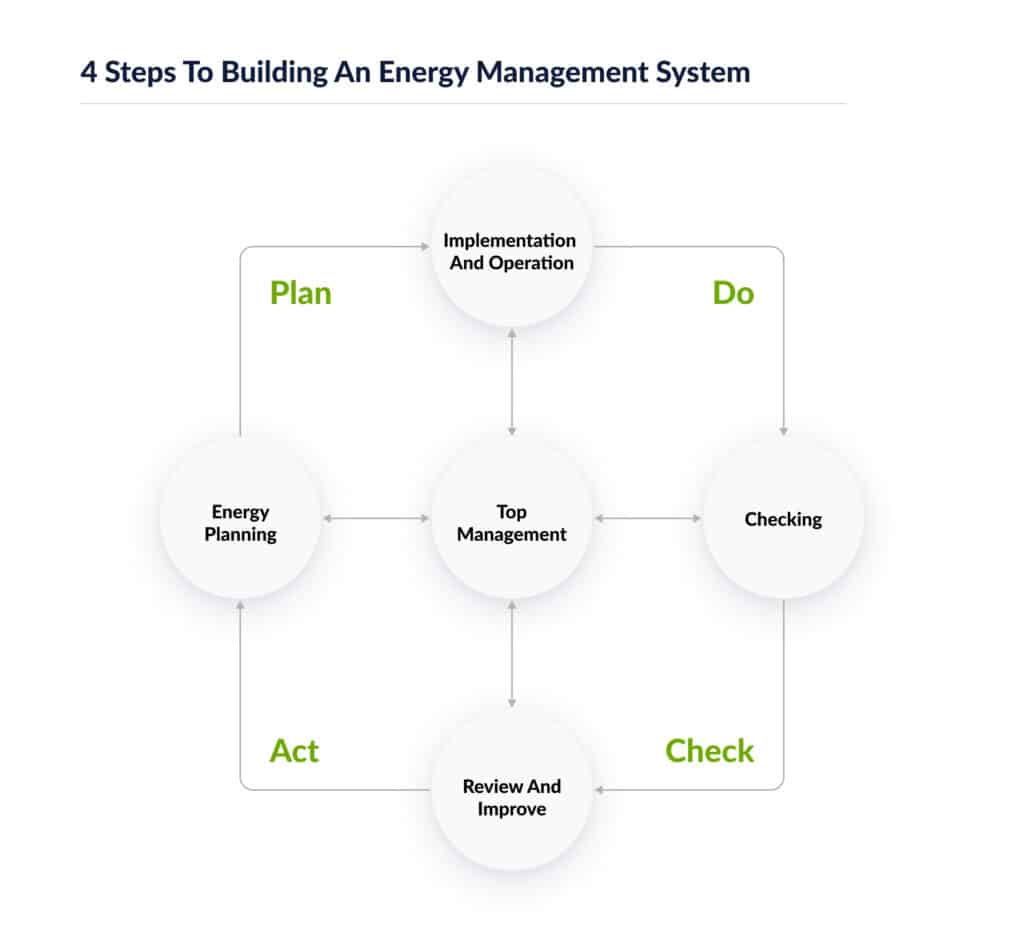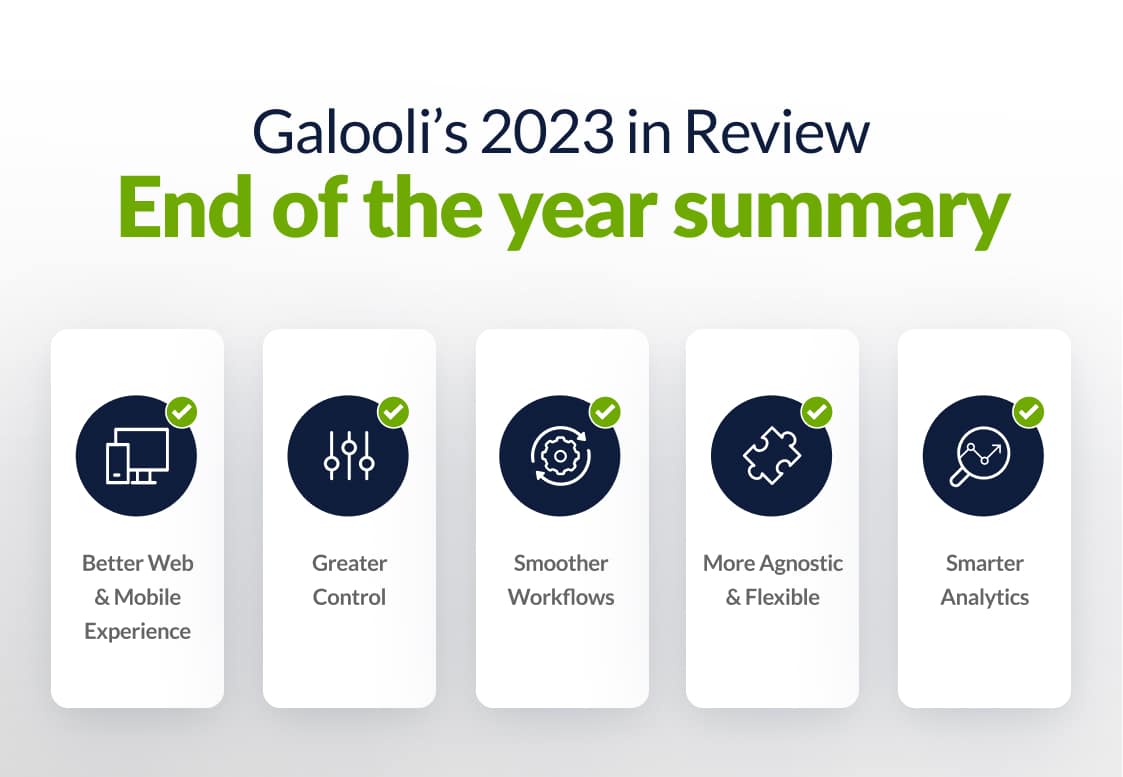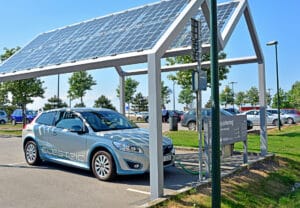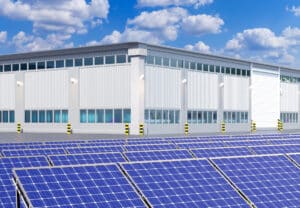
The energy management industry is booming. In 2022, the sector is expected to reach close to $10 billion.
As companies start taking a deeper look at their energy use and carbon footprint, successfully managing their usage and assets has become more critical than ever, but what is an energy management system?
According to the OECD, an Energy Management System (EnMS) is defined as “[…] a systematic process for continually improving energy performance and maximizing energy savings.”
In other words, EnMS systems are designed to manage and monitor an organization’s facilities, sites, and other remote energy use to detect inefficiencies and opportunities for optimization. They can also provide insights into energy consumption, efficiency, and technology.
So let’s look at why it’s so important to start focusing on your Energy Management System adoption efforts.
What are the benefits of Energy Management Systems?

The first thing that comes to mind when you think of energy management is likely, cost and efficiency. But there are many more benefits that an energy management system brings.
An Energy Management System provides the ability to:
- Reduce energy, maintenance, and overall operational costs.
- Identify and correct inefficiencies and optimize remote energy assets.
- Maximize renewable energy usage to reduce carbon footprint and fuel reliance.
- Detect performance problems, even predictively alerting potential issues.
- Increase return on investment from implementing new technologies onsite.
- Provide controls for remote assets to reduce the necessity for onsite visits.
Achieving remote control and automation is paramount for any organization looking to eliminate energy inefficiency in their operations. Though some systems may require a certain level of investment upfront, the return on investment, economically, environmentally, and socially is well worth it.
However, without a properly executed Energy Management System, it will most likely require a great deal of time and money while relying on multiple different solutions to achieve these changes. We’ve broken down the most important aspects of an effective system to manage your energy use and assets to save you some time.
Key components of a successful Energy Management System
You might think that an energy management system could be limited to software, and in some cases, you would be right. However, there are several functions that are fundamental to the success of building a practical and insightful system.
Monitoring and Analysis
Any effective Energy Management System must monitor, track, and analyze the performance of energy assets and the energy that facilities use. This also includes actively monitoring your various assets’ energy use and health.
Part of this is also being vigilant in using the resources available to find inefficiencies. You must establish clear performance thresholds to ensure that these remote assets operate as expected.
Resource Management
It takes more than a wary eye on your remote energy assets and sites to keep your energy use on track. You need to manage these assets actively, and the thresholds you established earlier will transform into live alerts to help this become a smoother process.
By examining the live and historical data from your tracked energy KPIs, your Energy Management System can help predict when failures might be imminent. This can then help mitigate an extended asset outage or complete site downtime. You can also detect where resources are used needlessly and immediately improve your efficiency by eliminating these issues.
Efficiency
What is an Energy Management System if it can’t provide distinct value and return on investment? An Energy Management Systems most critical component is its efficiency for your operations.
It begins with optimizing energy consumption to focus on renewables and minimizing unnecessary operations during idle periods. Efficiency also directly affects your bottom line by reducing fuel and overall energy costs and reducing wear and tear on your equipment.
This, in turn, reduces the need for regular maintenance, improves the durability and lifetime of your remote assets, and reduces maintenance and replacement costs.
Regulation and Policy
An inseparable part of any successful Energy Management System is the regulations and policy behind it. The ISO 50001 for energy management is an excellent standard for organizations to base their Energy Management Systems on and streamline the implementation. This standard was designed to be used in tandem with other similar energy and environmental management endeavors as a part of any organization’s ESG goals.
Another part of this is maintaining clear organizational targets and objectives that would be supported by adopting and maintaining such a standard. The ISO 50001 helps craft that policy by optimizing your process of collecting data, measuring results, and reviewing policy effectiveness.
4 steps to building an Energy Management System

Now that we’ve gone through the fundamental components of an EnMS, it’s time to break down the stages to implementing and using these systems effectively. We’ve broken it down into three primary steps.
1. Collect the relevant data
The first step to building your energy management system is to collect performance data. The most important part of this is focusing on relevant KPIs to provide accurate insights and potential optimization points.
You need to break down the various metrics related to your energy consumption and your remote assets’ live and historical performance. This means keeping a keen eye on these KPIs and your remote facilities to grasp a pivotal piece to the puzzle.
2. Analyze
Now that you’ve gathered the data from relevant metrics, you need to put that data to work. You can now establish clear thresholds that your remote assets should operate within.
You can understand when and how often your remote assets and sites perform correctly and when they malfunction. You can also determine how efficiently these assets are operating and when activity peaks so you can adjust your asset usage accordingly.
3. Identify opportunities
With your data and analytics providing insights into energy and remote site performance, it’s time to hone in on possible optimizations. Generators operating when they aren’t needed, backup batteries charging improperly, and even theft of fuel can all be factors causing issues with your efficiency.
Moreover, sometimes machinery needs to be replaced or is improper for the needs of a specific site. It is essential to detect these issues before they cause outages and downtime in these cases. Using an all-in-one remote monitoring and management solution like Galooli’s for your energy assets and remote sites makes this process easy and streamlined.
4. Implement and review
The last step is to take those insights and enact them, making the necessary changes you identified. The process doesn’t end just yet though. You still need to monitor these changes and ensure the results line up with your organizations goals. If anything is still off, run through the process again focusing on that issue, and check that this time around the change is marked and according to expectations.
Start taking charge of your energy use
Establishing a successful Energy Management System is a multi-faceted process that will require all of your staff on board. Implementing all the necessary components while following a guide like an international standard can help ease the growing pains involved.
Galooli’s energy monitoring and management platform gives you over-arching visibility over your remote assets and sites and control capabilities.
Our AI-enhanced actionable insights help maximize your remote assets’ performance while improving energy efficiency, operational costs, and your carbon footprint.
Connect With Us
operational cost savings & efficiency?



























